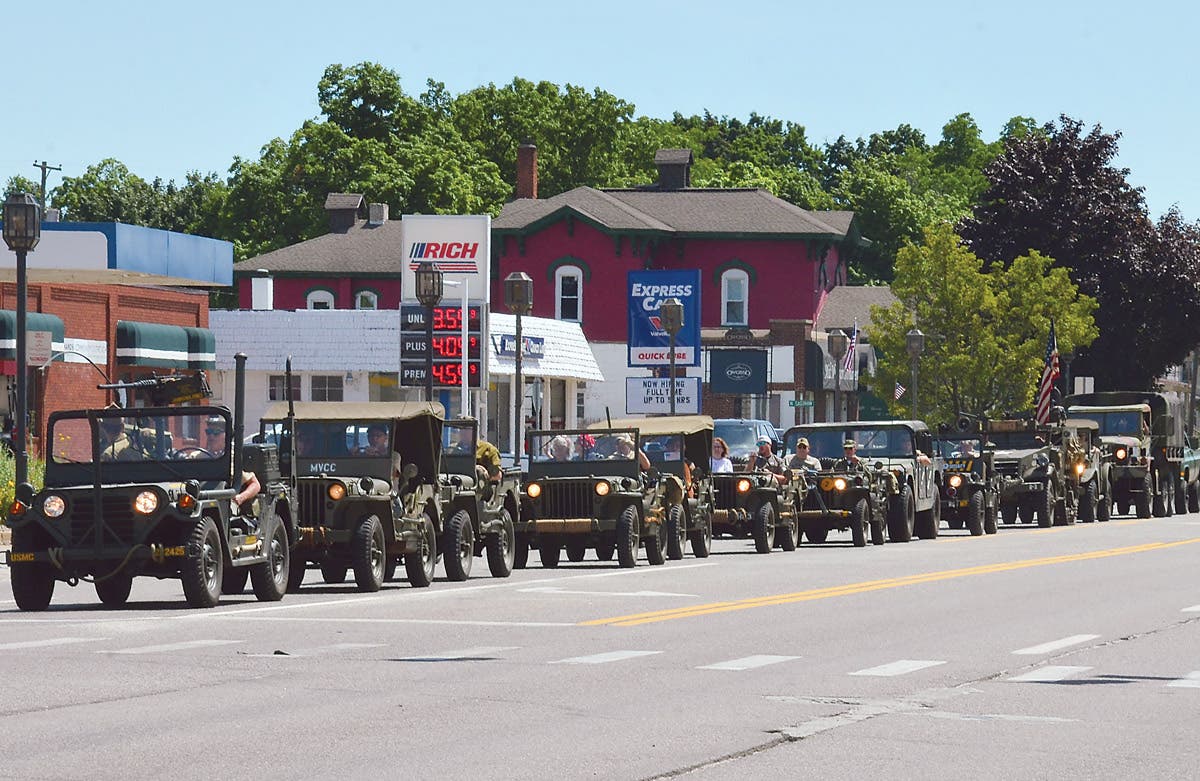Catching the bus! Wartime vehicles taking a different road
Wartime buses still making the wheels go “round and round” after all the years.
Whenever I visit a military vehicle show I ask myself the question ahead of time: “What vehicles will be there?” Of course, the answer is military vehicles, but you don’t know for sure what type until you get on site. There are traditionally the usual tracked and wheeled vehicles, including tanks and scout cars, Jeeps and motorbikes. Then in the 1990s, or perhaps earlier, tractors and other agricultural machinery began to turn up. These showed how important these vehicles were in feeding the masses during WWII. Then I noticed emergency vehicles, fire, police and ambulance, were making appearances. I cannot recall the date when I first saw a first bus displayed at a show, but it did not look out of place because public transport operated during the war.
Since then, I have seen many buses turn up at shows and my opinion has gone from being one of questioning “Why are they here?” to an attitude of acceptance that these vehicles provided a vital public service. Curious to know more about the wartime role of these vehicles I undertook some research. It appears that the term bus, or omnibus, was probably coined by Stanislas Baudry in 1892, to describe his horse-drawn public transport vehicles, which he called omnibus cars or “cars for all”. More than 130 years later we use the term to describe the large vehicles moving people around the streets of towns and cities around the world.
Buses truly were vital in wartime Britain, transporting millions of people daily as they journeyed to work in factories, offices and shops to keep the country as operational as possible. Joining the civilian passengers on many of these journeys were thousands of service personnel, which as the war went on, included Allied troops from overseas, thrown together in a cosmopolitan mix.
Public transport was not without its attendant risks, and buses were often caught in bomb blasts during air raids. Photographs show these vehicles, some weighing between 11 and 14 (long) tons, thrown aside like waste paper. Other images show buses half buried, having fallen into bomb craters, with passengers becoming casualties.
Throughout WWII buses were in the forefront, of war serving communities across the country. Many bus drivers were killed during the bombing “Blitz” of cities such as London, Coventry and Nottingham as they continued to operate services throughout the blackout. Some bus companies raised their own units of Home Guard and even went as far as converting some vehicles for the role. For example, the London Passenger Transport Board Home Guard, made up of managers, drivers, conductors and mechanics, were found in many depots. One unit went as far as converting an AEC Regent bus into an armored vehicle for the unit’s use. It was a monstrous steel box with a pitched roof and apertures through which the men could fire their rifles.
In the case of London Transport several battalions of Home Guard were raised and the “Dartford Country Bus Depot Home Guard” used some of its own vehicles for transportation.
In response to this renewed interest, special events such as “Showbus” (www.showbus.com) have been established. Show is believed to be the largest event of its kind in the world. Open-air museums, including Beamish in County Durham, (www.beamish.org.uk), Beaulieu in Hampshire (www.beaulieu.co.uk) and the Historic Dockyard at Chatham in Kent (www.thedockyard.co.uk), operate restored vintage buses. The Omnibus Society (www.omnibus-society.org) has been established as a forum for enthusiasts, owners and enquiries and lists events involving buses. There are specialist museums where visitors can learn more about buses, such as the Trolleybus Museum at Sandtoft in Doncaster, which has a range of vintage buses on display and special events are organized when the vehicles are operational. The museum also hosts “The Gathering”, where vehicles assemble for a grand show. Details of all these events can be found on at www.sandtoft.org
Some bus enthusiasts have converted vehicles into traveling exhibitions to visit schools and support re-enactment and living history events around the country. One such vehicle is a double-decker bus turned into a mobile museum exhibition for the Home Front operated by the Home Front Bus (www.homefrontbus.com) It has been fitted out to provide a wartime experience of civilian life, and upstairs there is the “Blitz” experience with a wartime newsreel film telling how the bombing affected life and how public transport was still needed to provide services. To complete the effect, members of the group dress in clothes of the period.
After researching these nostalgic vehicles I can understand the enthusiasm people have for buses and the memories they evoke. As a young boy I remember riding on the top of double-decker buses in the 1950s — they gave you a great view from above. It seems to me the design did not change very much over the years.
At a 1940s weekend I took the opportunity to join other passengers taking a ride on one of the vintage vehicles. The experience did take me back, but it only served to remind me just how uncomfortable and smelly these things were. I have been on other vintage buses since then. Other people have more pleasant memories of old buses than I do, and one day I may come to change my mind about them.
In the meantime, though, it is not for me to spoil their enjoyment!






